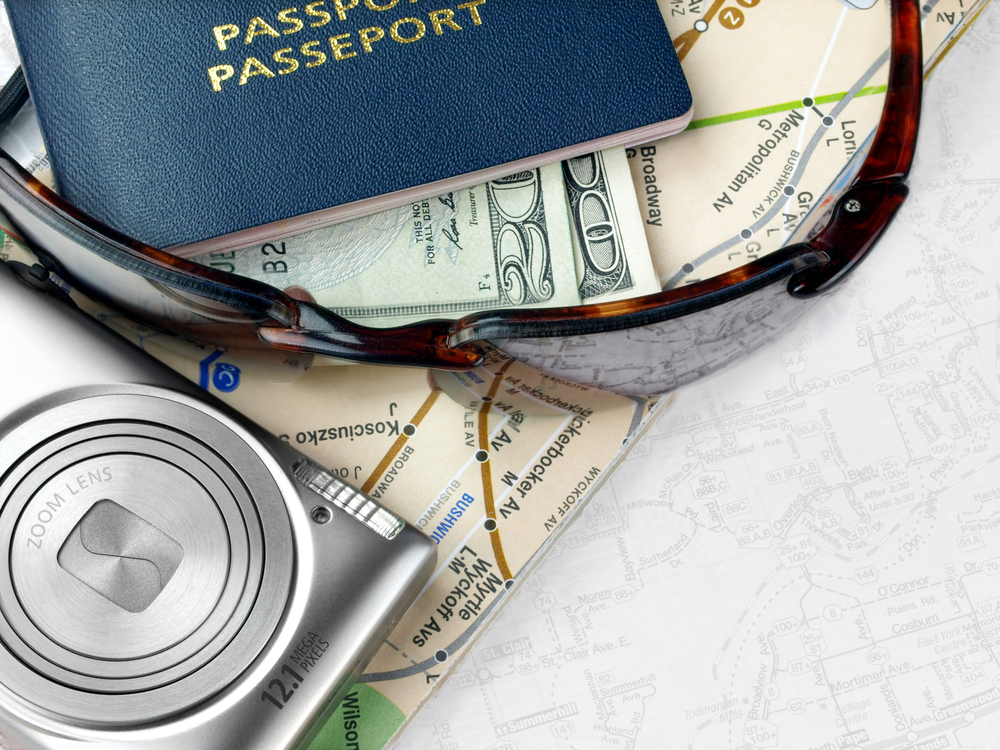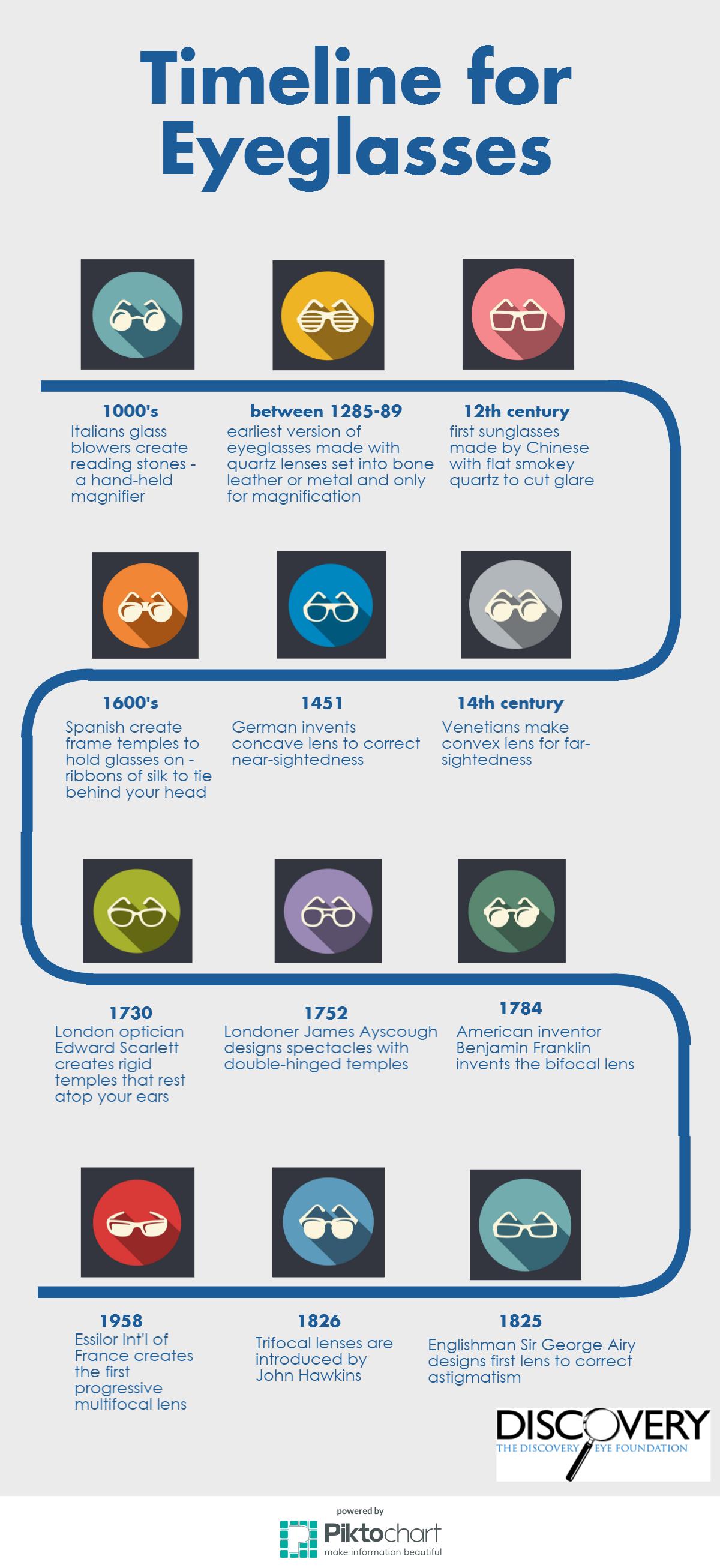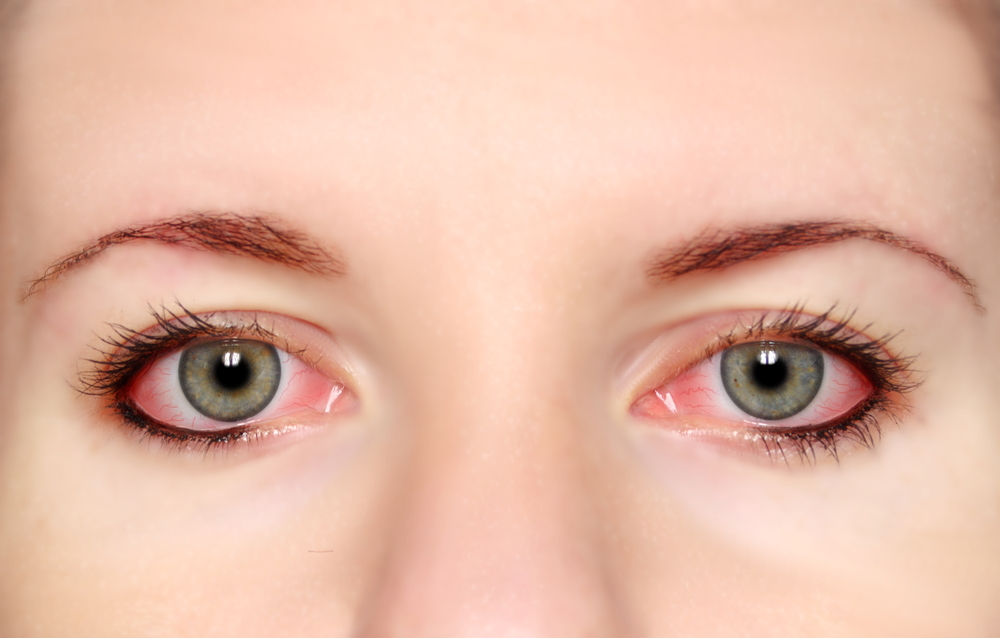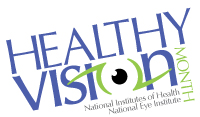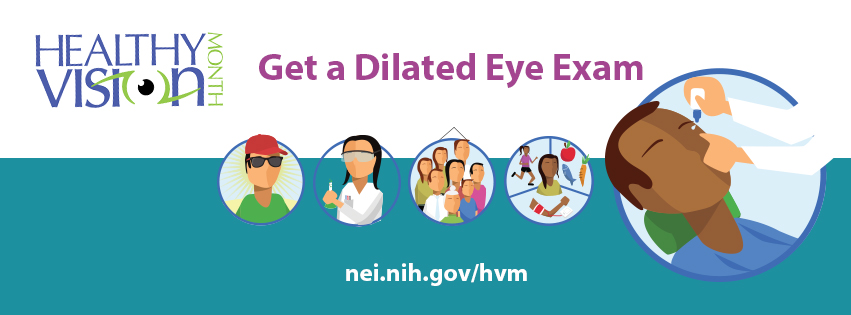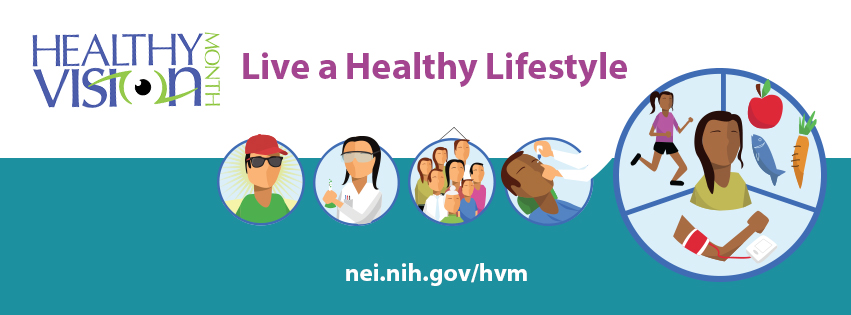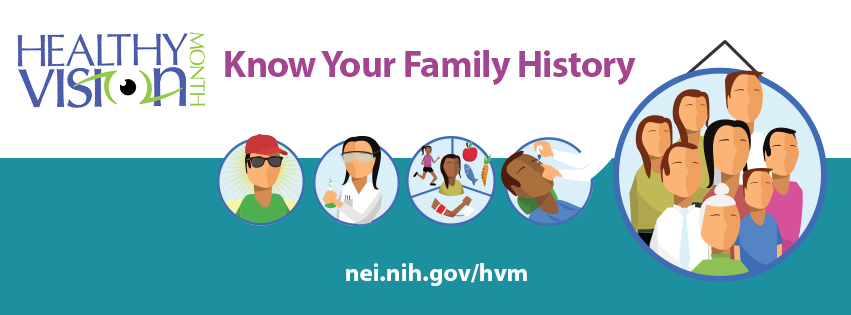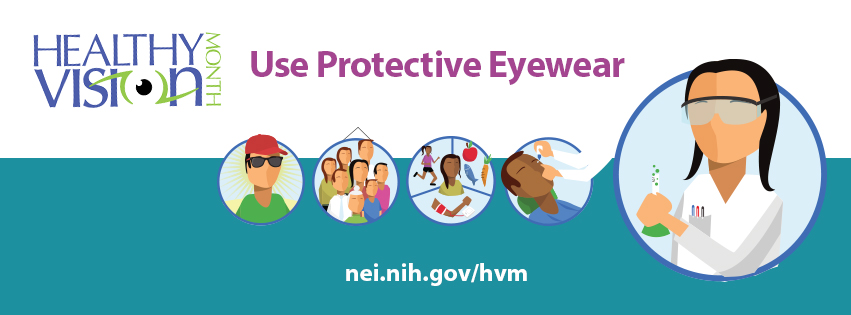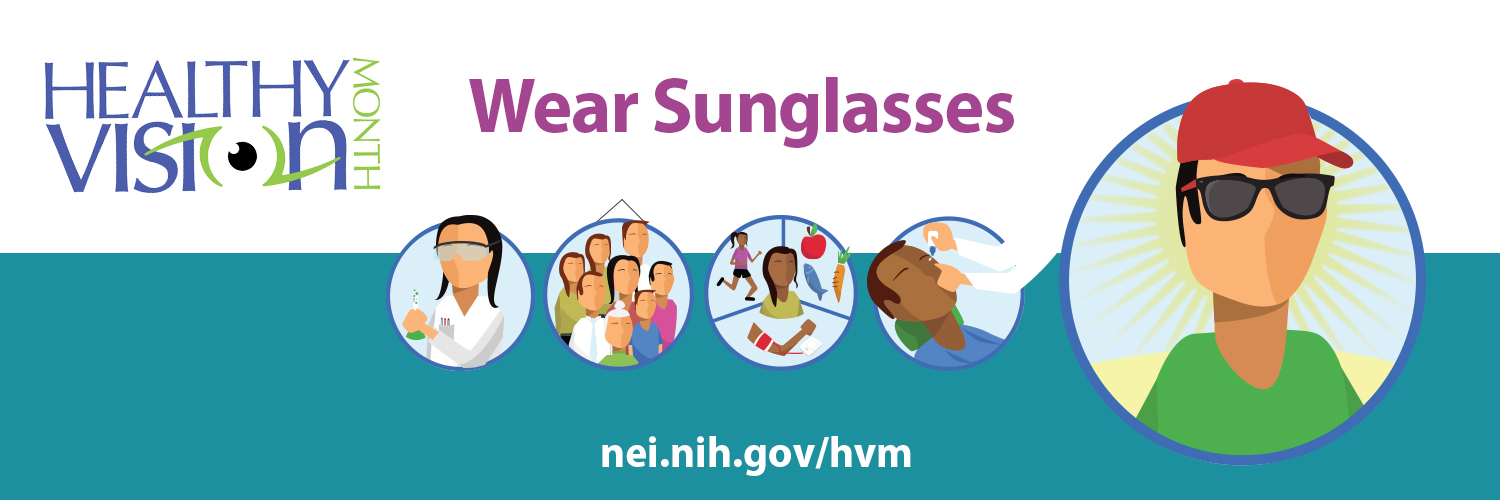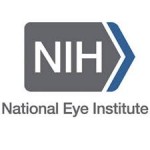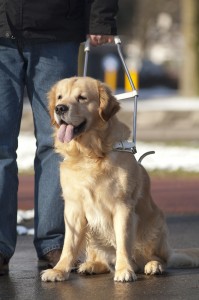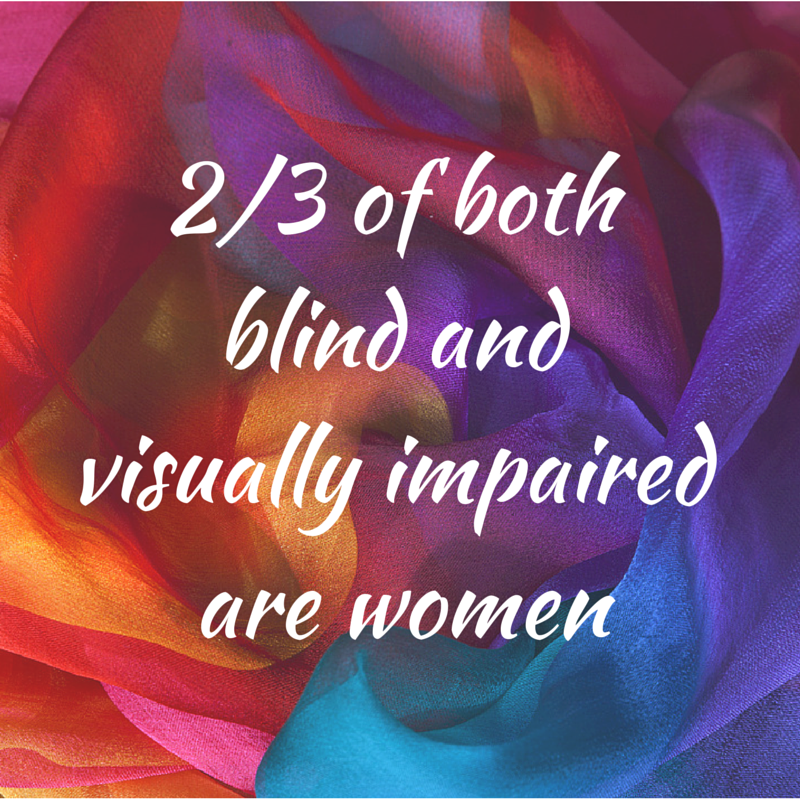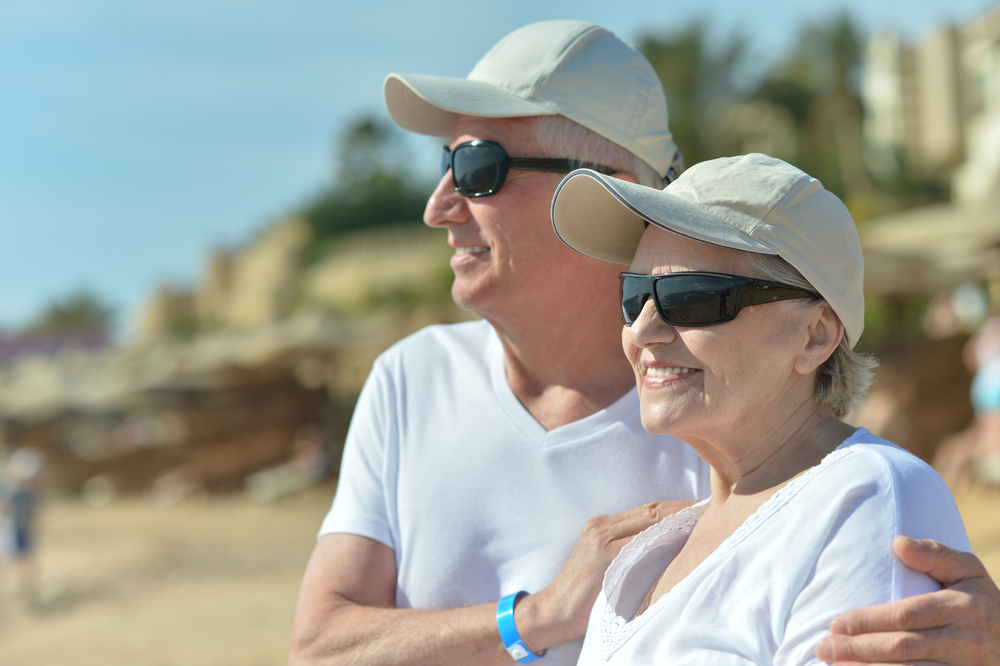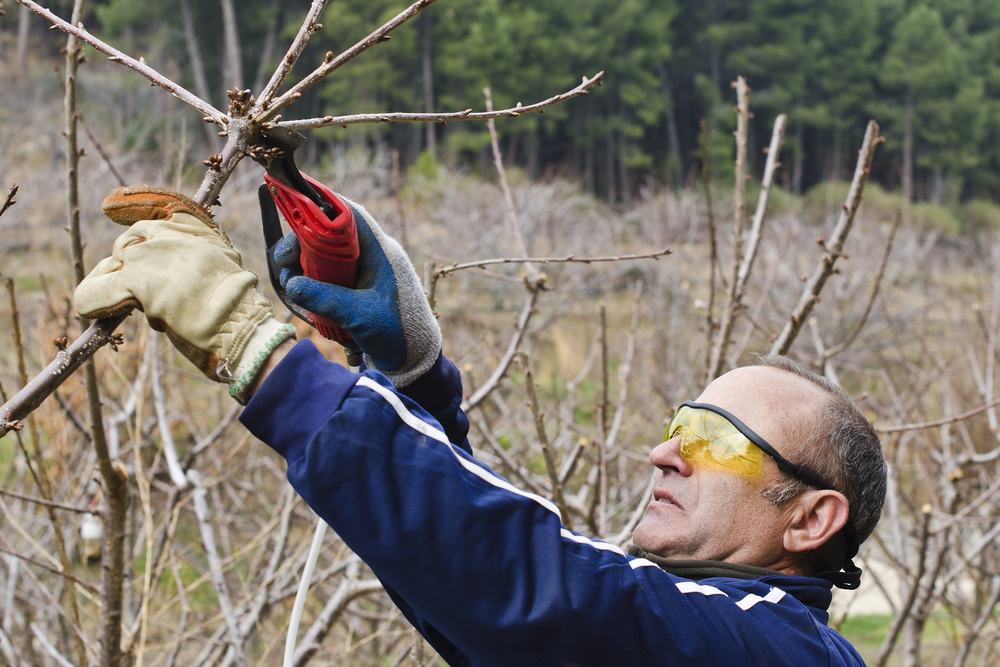Traveling with Guide Dogs
Adam Lawrence was diagnosed with retinitis pigmentosa (RP) when he was 17, but the disease did not have a profound effect on his life until his early 40s. “I sometimes had trouble with bright sunlight during the day, but I dealt with it by wearing dark sunglasses. Then one morning, I woke up, and it was like I was staring through a haze of pepper,” he says.
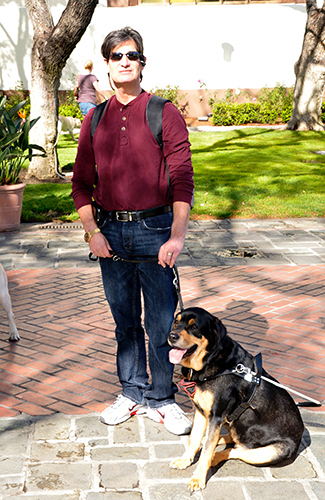
Lawrence gave up his job in the banking industry, as he could no longer see the contracts he needed to review. “I had to stop working and driving, and I had to figure out how to adapt,” he recalls. “I was great at organization, so my job became running the house, while my wife went to work. I got a scanner and a JAWS (Job Access With Speech) screen-reader for my computer, and I learned to read Braille.”
Lawrence is now legally blind, and his RP had another profound affect on his life about seven years ago, when he and his wife encountered Guide Dogs of America (GDA) at a fundraising event.
“I didn’t plan to get a guide dog, but they had a chocolate Lab puppy on the table” he says with a smile. “They put my hand on the puppy, and there was no turning back.”
Lawrence went through an interview and then an intensive 28-day on-site orientation program at GDA’s school in Sylmar, Calif. He was paired with a black and tan Labrador named Escort — also known as “the greatest dog in the world.”
With Escort, Lawrence feels a sureness and freedom he never experienced with other mobility tools. “When I walk with a cane, I don’t feel as confident, and I’m much slower. He gives me confidence, mobility and ability.”
Now in their sixth year as a team, Lawrence and Escort are virtually inseparable. They even shop together: “A person in the market takes our list, then Escort and I follow them around the store.”
They also travel extensively and have been everywhere from Mexico to New England to Colorado, where they went rock-climbing. “On the way down, Escort chose the more difficult path for himself, and left the easier path for me. He’s amazing,” Lawrence says.
Lawrence is quick to point out that “Escort is not a GPS. I have to plan and know where we are going. He’s there to keep me safe; he’s not there to figure out where to go — that’s my job.”
For more on traveling with guide dogs, including Lawrence’s adventures with Escort, read “Traveling Tails”, an article from our most recent e-newsletter.
5/19/15
 Lauren Hauptman
Lauren Hauptman
Lauren Hauptman INK


